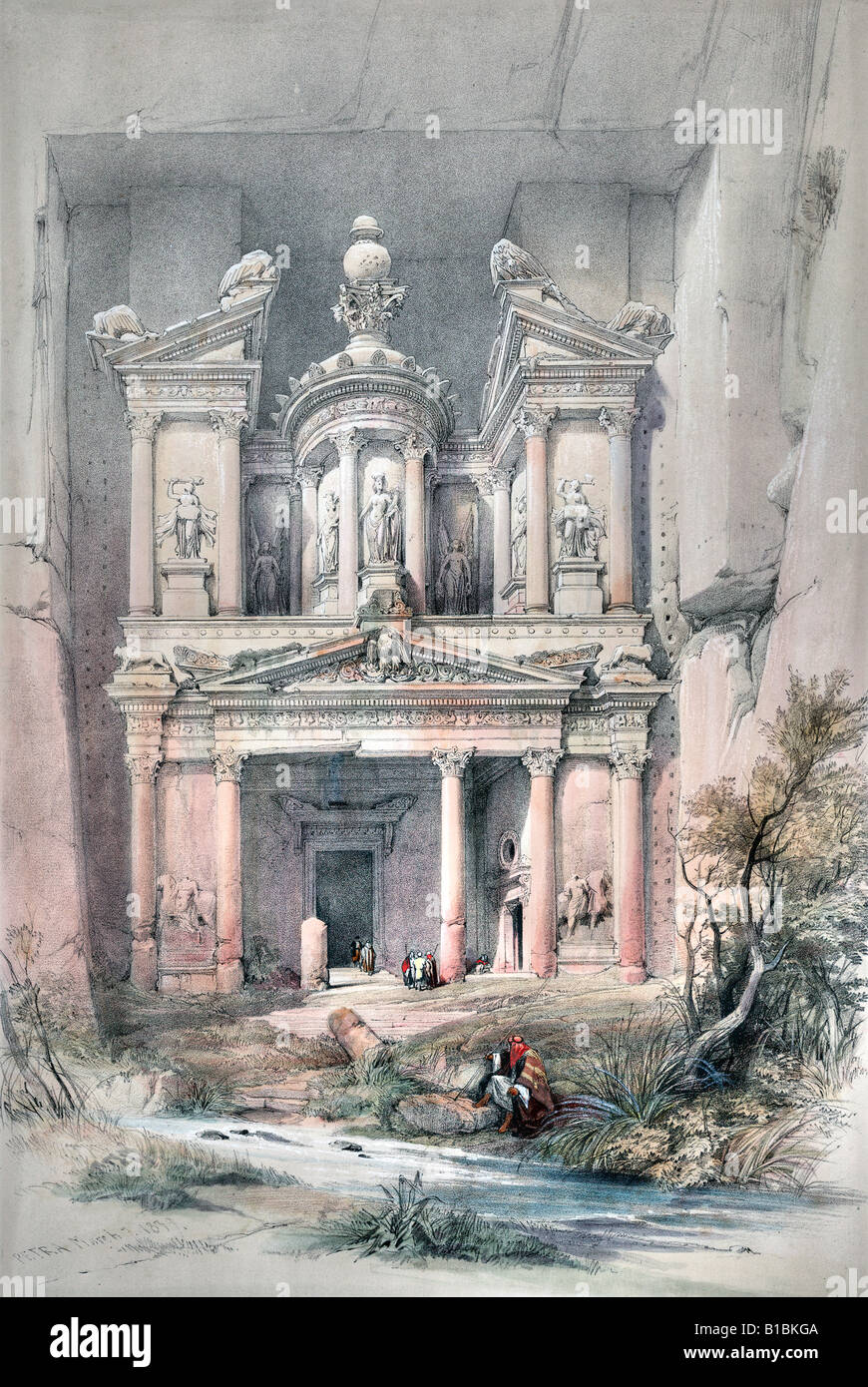The city of Petra 1839 The treasury

Image details
Contributor:
Holy Land Art / Alamy Stock PhotoImage ID:
B1BKGAFile size:
68.8 MB (6.8 MB Compressed download)Releases:
Model - no | Property - noDo I need a release?Dimensions:
4012 x 5994 px | 34 x 50.7 cm | 13.4 x 20 inches | 300dpiMore information:
The Nabataeans worshipped the Arab gods and goddesses of the pre-Islamic times as well as few of their deified kings. The most famous of these was Obodas I who was deified after his death. Dushara was the main male god accompanied by his female trinity: Uzza, Allat and Manah. Many statues carved in the rock depict these gods and goddesses. The Monastery, Petra's largest monument, dates from the first century BC. It was dedicated to Obodas I and is believed to be the symposium of Obodas the god. This information is inscribed on the ruins of the Monastery (the name is the translation of the Arabic "Ad-Deir"). Plan of the Byzantine church, 5th century AD.Christianity found its way into Petra in the 4th century AD, nearly 500 years after the establishment of Petra as a trade center. Athanasius mentions a bishop of Petra (Anhioch. 10) named Asterius. At least one of the tombs (the "tomb with the urn"?) was used as a church. An inscription in red paint records its consecration "in the time of the most holy bishop Jason" (447). The Christianity of Petra, as of north Arabia, was swept away by the Islamic conquest of 629–632. During the First Crusade Petra was occupied by Baldwin I of the Kingdom of Jerusalem and formed the second fief of the barony of Al Karak (in the lordship of Oultrejordain) with the title Château de la Valée de Moyse or Sela. It remained in the hands of the Franks until 1189. It is still a titular see of the Roman Catholic Church. According to Arab tradition, Petra is the spot where Moses struck a rock with his staff and water came forth, and where Moses' sister, Miriam, is buried. Digitally restored Art Paintings The Holy Land Syria Isreal Arabia Egypt and Nubia